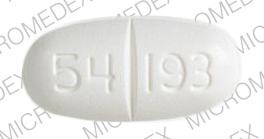Viramune Suspension Dosage
Generic name: NEVIRAPINE 50mg in 5mL
Dosage form: tablet, oral suspension
Drug class: NNRTIs
Medically reviewed by Drugs.com. Last updated on Jun 19, 2022.
2.1 Adult Patients
The recommended dose for VIRAMUNE is one 200 mg tablet daily for the first 14 days, followed by one 200 mg tablet twice daily, in combination with other antiretroviral agents. The 14-day lead-in period with VIRAMUNE 200 mg daily dosing must be strictly followed as the lead-in period has been observed to decrease the incidence of rash [see Dosage and Administration (2.4) and Warnings and Precautions (5.2)]. If rash persists beyond the 14-day lead-in period, do not dose escalate to 200 mg twice daily. The 200 mg once-daily dosing regimen should not be continued beyond 28 days, at which point, an alternative regimen should be sought. For concomitantly administered antiretroviral therapy, the manufacturer’s recommended dosage and monitoring should be followed.
2.2 Pediatric Patients
The recommended oral dose for pediatric patients 15 days and older is 150 mg/m2 once daily for 14 days followed by 150 mg/m2 twice daily thereafter. The total daily dose should not exceed 400 mg for any patient.

| BSA range (m2) | Volume (mL) |
| 0.06 – 0.12 | 1.25 |
| 0.12 – 0.25 | 2.5 |
| 0.25 – 0.42 | 5 |
| 0.42 – 0.58 | 7.5 |
| 0.58 – 0.75 | 10 |
| 0.75 – 0.92 | 12.5 |
| 0.92 – 1.08 | 15 |
| 1.08 – 1.25 | 17.5 |
| 1.25+ | 20 |
VIRAMUNE suspension should be shaken gently prior to administration. It is important to administer the entire measured dose of suspension by using an oral dosing syringe or dosing cup. An oral dosing syringe is recommended, particularly for volumes of 5 mL or less. If a dosing cup is used, it should be thoroughly rinsed with water and the rinse should also be administered to the patient.
2.3 Monitoring of Patients
Intensive clinical and laboratory monitoring, including liver enzyme tests, is essential at baseline and during the first 18 weeks of treatment with VIRAMUNE. The optimal frequency of monitoring during this period has not been established. Some experts recommend clinical and laboratory monitoring more often than once per month, and in particular, would include monitoring of liver enzyme tests at baseline, prior to dose escalation, and at two weeks post-dose escalation. After the initial 18-week period, frequent clinical and laboratory monitoring should continue throughout VIRAMUNE treatment [see Warnings and Precautions (5)]. In some cases, hepatic injury has progressed despite discontinuation of treatment.
2.4 Dosage Adjustment
Discontinue VIRAMUNE if a patient experiences severe rash or any rash accompanied by constitutional findings [see Warnings and Precautions (5.2)]. Do not increase VIRAMUNE dose if a patient experiences mild to moderate rash without constitutional symptoms during the 14-day lead-in period of 200 mg/day (150 mg/m2/day in pediatric patients) until the rash has resolved [see Warnings and Precautions (5.2)]. The total duration of the once daily lead-in dosing period should not exceed 28 days at which point an alternative regimen should be sought.
If a clinical (symptomatic) hepatic event occurs, permanently discontinue VIRAMUNE. Do not restart VIRAMUNE after recovery [see Warnings and Precautions (5.1)].
Patients with Dose Interruption
For patients who interrupt VIRAMUNE dosing for more than 7 days, restart the recommended dosing, using one 200 mg tablet daily (150 mg/m2/day in pediatric patients) for the first 14 days (lead-in) followed by one 200 mg tablet twice daily (150 mg/m2 twice daily for pediatric patients).
Patients with Renal Impairment
Patients with CrCl greater than or equal to 20 mL per min do not require an adjustment in VIRAMUNE dosing. The pharmacokinetics of nevirapine have not been evaluated in patients with CrCl less than 20 mL per min. An additional 200 mg dose of VIRAMUNE following each dialysis treatment is indicated in patients requiring dialysis. Nevirapine metabolites may accumulate in patients receiving dialysis; however, the clinical significance of this accumulation is not known [see Clinical Pharmacology (12.3)].
More about Viramune (nevirapine)
- Check interactions
- Compare alternatives
- Reviews (2)
- Drug images
- Side effects
- Dosage information
- During pregnancy
- Generic availability
- Drug class: NNRTIs
- Breastfeeding
Patient resources
Professional resources
Other formulations
Related treatment guides
Further information
Always consult your healthcare provider to ensure the information displayed on this page applies to your personal circumstances.


